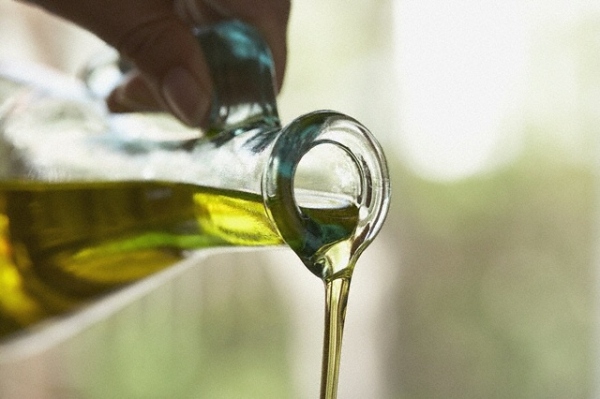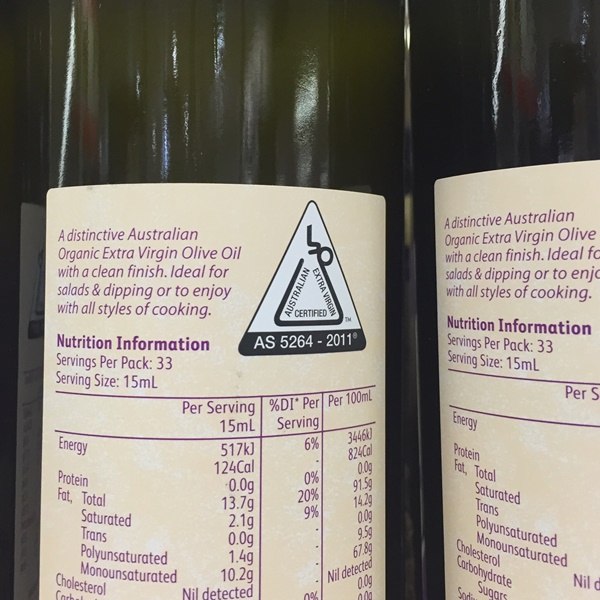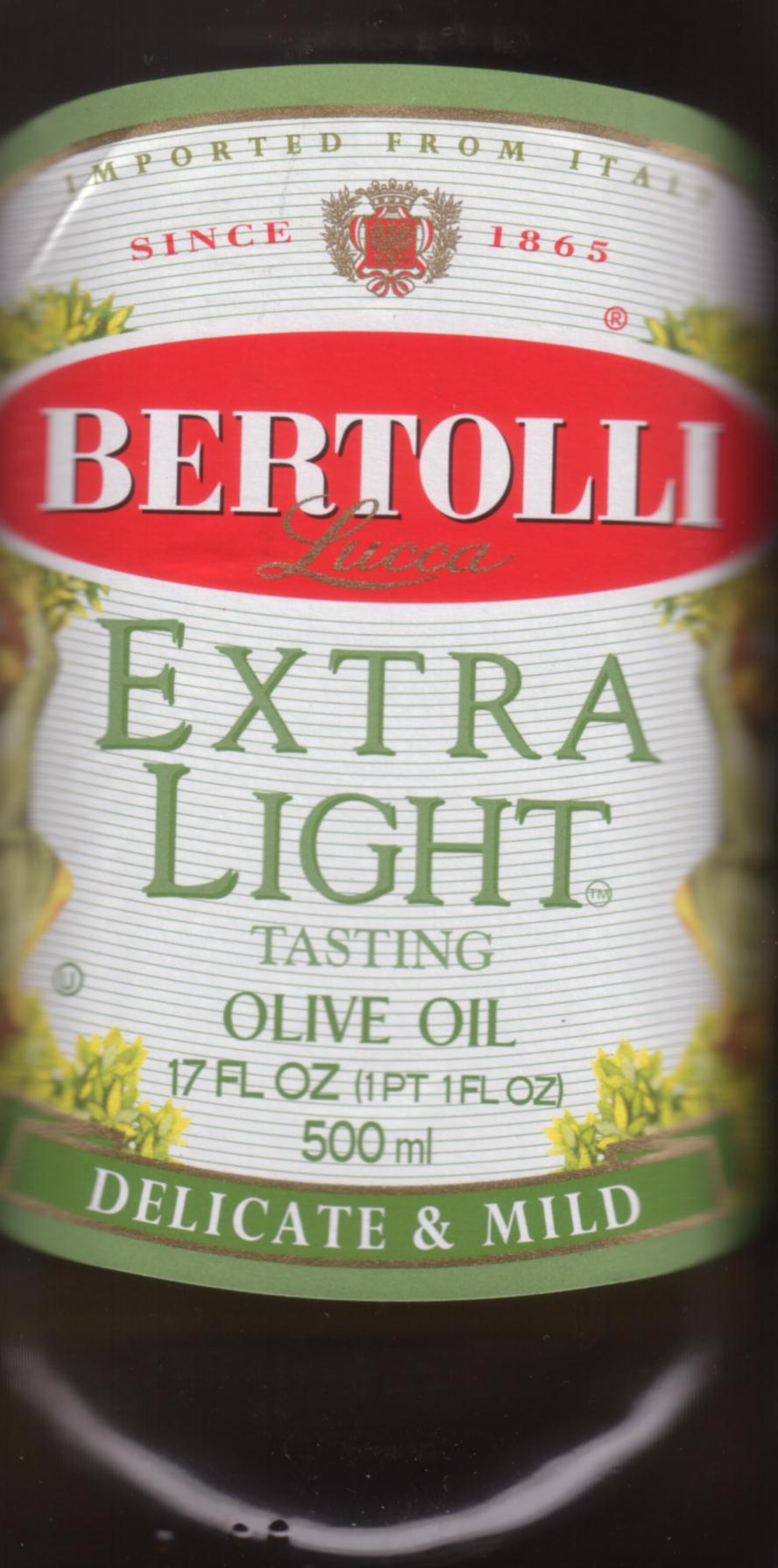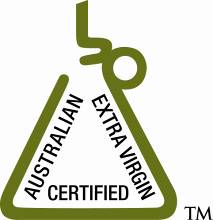Olive oils – what do all the classifications mean?

Olive oil is a key ingredient of the famed Mediterranean diet. It has been credited with reduced cholesterol; lower rates of heart disease; lower rates of certain cancers; and a slowing of the ageing process. Fuelled by chefs’ love of this golden liquid, I’m not surprised to see new olive groves being planted in Australia and sales soaring at supermarkets and farmers’ markets.
What’s so special about Olive Oil?
Olive oil is renowned for its low levels of saturated fat (less than 15 per cent) and high levels of monounsaturated fat in the form of oleic acid (close to 70 per cent), along with interesting phyto-compounds from phenolics and carotenoids. The big question is, do you have to spend your money on the expensive extra-virgin cold-pressed types or can any standard olive oil do the job?
How olive oils are graded
Olive oil is graded according to the pressing from which it comes, as well as on its flavour and acidity.
Free fatty acid or free acidity
The quality of an olive oil is generally measured as its ‘free’ fatty acid or ‘free acidity’ level. This has nothing to do with the oil tasting acidic or sour. It simply describes the uncoupling of the oil’s triglycerides into single fatty acids which aren’t attached to the glycerol ‘backbone’ and therefore can be found on their own.
Ideally, you don’t want much free oleic acid (the fatty acid in question). You want it all bound to a triglyceride, as would occur in nature. The standards for olive oil reflect this. They say: Extra Virgin Olive Oil can have no more than 0.8 per cent free oleic acid, whether you use the International Olive Oil Council (IOOC) or the Australian Standard AS 5264-2011.
A high level of free acid means the oil has been extracted carelessly and/or from poor quality or bruised fruit. Alternatively it tells you that there were delays between harvesting and extraction. Perhaps the fruit was hit by a fungus, or the picked olives were stored too long before pressing or in tall silos where they got squashed.
Whatever the cause, the free acidity gives you a direct measure of the quality of the oil, and reflects the care taken right from blossoming and fruit-set to the eventual sale and consumption of the oil. The take home message is - low acidity means high quality and a premium price.
5 types of olive oil, starting with the best
1. Extra-virgin olive oil (EVOO)
EVOO is the natural olive oil that comes from the first pressing of the olives and has a green or yellow tinge, low acidity and a strong, distinctive, almost-bitter flavour. It is the ‘juice’ of the olives, which technically are the fruit of the olive tree (Olea europea L).

The oil is made by crushing, cold pressing or cool extraction techniques to produce an olive oil with a free acidity, expressed as free oleic acid, of not more than 0.8 per cent.
True cold-pressed EVOO is produced by mechanically ‘squeezing’ the oil out under pressure. Traditionally it has not undergone any treatment other than washing, crushing, decanting, centrifuging (spinning) and filtering. These days, most olive growers take their ripe olives to the local olive press which uses a large screw to turn and squeeze out the oil before filtering and bottling. It’s worth a visit to a press just to watch it at work.
EVOO has a stronger, more fruity flavour and contains more vitamin E and phytochemicals such as phenols and squalene, although there is great variability between green or black olives, different varieties and time of harvest.

Some extra-virgin oils, typically ‘early harvest’ styles, can taste strongly bitter and pungent. Others can be fruity with only hints of bitterness and pepper, while ‘late harvest’ styles are usually mild with very ripe fruity flavours.
Considered the best quality, EVOO is the most expensive and is prized for its distinctive flavour and viscosity. Many claim it to be superior to regular oils which are extracted using heat or solvents. Some extra virgin is also unfiltered, which gives it a denser look and greener colour.
I love this type of olive oil and buy gourmet Australian brands such as Cobram and Pukara. As it is expensive, I used to save it for drizzling cold over cooked vegetables or in my salad dressings. However, better harvesting and quicker processing techniques mean you can cook with good quality EVOO without it smoking.
EVOO has a high smoke point of 210°C which is above the temperature of deep frying, which is usually 180°C. Cheaper and poor quality EVOO gave them all a bad name for cooking. These don’t stand up to frying temperatures.
2. Virgin olive oil (VOO)
This is also a natural olive oil but is not quite as good as EVOO. It has a slightly higher acidity value with some slight flavour imperfection compared to extra virgin. So it’s a lower grade and you’ll pay less for it. But’s it’s still fine in the kitchen. Technically it has a free acidity expressed as oleic acid of not more than 2 per cent.
3. Refined olive oil
This is a lesser grade of olive oil, taken from subsequent pressings of the remaining olive flesh after the virgin oil is collected. It is lighter in colour, not very viscous with an almost neutral mild taste and less costly.
It can be refined by bleaching or deodorising to improve its faulty flavour or to neutralise high acidity as long as this doesn’t lead to any alterations in the structure. It may then be mixed with a little virgin oil.
It has the same high monounsaturated fat content but little in the way of antioxidants.
Sold in tins to protect it from going off, Italians and Greeks use this general olive oil for everyday cooking. It can be useful when you don’t want a strong olive flavour, say in baking.
It has a free acidity of only 0.3 per cent.
4. Olive-pomace oil
Olive pomace oil is extracted from the pulp or waste (think stones and skins) left behind once the virgin oil is removed. It is extracted using pressure and solvents and then blended with a little virgin oil. Avoid these types of olive oils.
5. Lampante olive oil
This is not fit for consumption without further processing. This oil has a high free acidity and /or has flavour defects. It is only intended to be used for refining and technical use.
Light olive oil and Extra-light olive oil
 Light and extra-light olive oils are lighter in colour and milder in aroma and flavour, but not lower in fat or kilojoules (Calories). Read my post on Light foods and you’ll see I place them in a category of ‘No difference’ and no benefit if you’re trying to lose weight.
Light and extra-light olive oils are lighter in colour and milder in aroma and flavour, but not lower in fat or kilojoules (Calories). Read my post on Light foods and you’ll see I place them in a category of ‘No difference’ and no benefit if you’re trying to lose weight.
Light olive oils are olive oils that have been refined. With their bland flavour, they are similar to canola and other monounsaturated oils in taste and composition.
If you find the taste of extra virgin too strong, light oil is a gentle introduction to olive oil if one is unused to its strong flavour. But be warned – you’re not getting the full health benefits of olive oil as claimed in the research studies.
Australian Code of Practice for extra virgin olive oils
 In 2008, the Australian Olive Association published a Code of Practice, which guarantees the authenticity and quality of certified Australian extra virgin olive oils. Technically it’s called Australian Standard AS 5264-2011.
In 2008, the Australian Olive Association published a Code of Practice, which guarantees the authenticity and quality of certified Australian extra virgin olive oils. Technically it’s called Australian Standard AS 5264-2011.
You’ll spot a small triangular certification symbol on bottles of extra virgin olive oil.
This symbol is the guarantee you’re getting the best quality and that the oil has been lab tested, taste tested and is 100 per cent Australian.
According to the Association, some 95 per cent of Australian olive oils are extra virgin, which have been cold-pressed without the use of chemical solvents or heat. It’s a voluntary scheme so is not required on all oils.
Australian boutique brands that are certified include:
 Gwydir Grove, Bunna Bunoo, Lomondo, Pukara Estate, Rylstone, Beerenberg, Maggie Beer, Ollo, Primo Estate, Jo Grilli, Viva, Kyneton, Myrtlevale, Western Groves and Frankland River.
Gwydir Grove, Bunna Bunoo, Lomondo, Pukara Estate, Rylstone, Beerenberg, Maggie Beer, Ollo, Primo Estate, Jo Grilli, Viva, Kyneton, Myrtlevale, Western Groves and Frankland River.
Supermarket certified brands that are certified include:
Cobram Estate, Red Island, Tree of Life, Boundary Bend Estate, Aldi and Olivegrove.
Nutrition stats
Per 100 mL
No protein, 92 g fat (including 14 g saturated fat), no carbohydrates, no sugars, no dietary fibre, no sodium and 3554 kilojoules (845 Calories)
Per serve
One tablespoon olive oil (15 mL) supplies no protein, 14 g fat (including 2 g saturated fat), no carbohydrates, no sugars, no dietary fibre, no sodium and 517 kilojoules (123 Calories)
Note: the fat does not add to 100 g as the figures are for 100 mls of liquid oil. Plus EVOO contains squalene and plant sterols which get analysed as “Fat” but are different to the usual triglycerides of nutrition.
Bottom line
Buy Australian-grown and buy the freshest you can soon after harvest. Look for the triangle symbol (it’s small) on the back of the label as your guarantee. Some 95 per cent of all olive oil now grown here is extra-virgin olive oil so we’re in a good position.
 I prefer to buy Australian are they’re harvested and bottled locally, so I know I’m buying the most recent harvest and they haven’t been shipped across the world. Plus I’m supporting Aussie farmers, pickers and pressers.
I prefer to buy Australian are they’re harvested and bottled locally, so I know I’m buying the most recent harvest and they haven’t been shipped across the world. Plus I’m supporting Aussie farmers, pickers and pressers.



